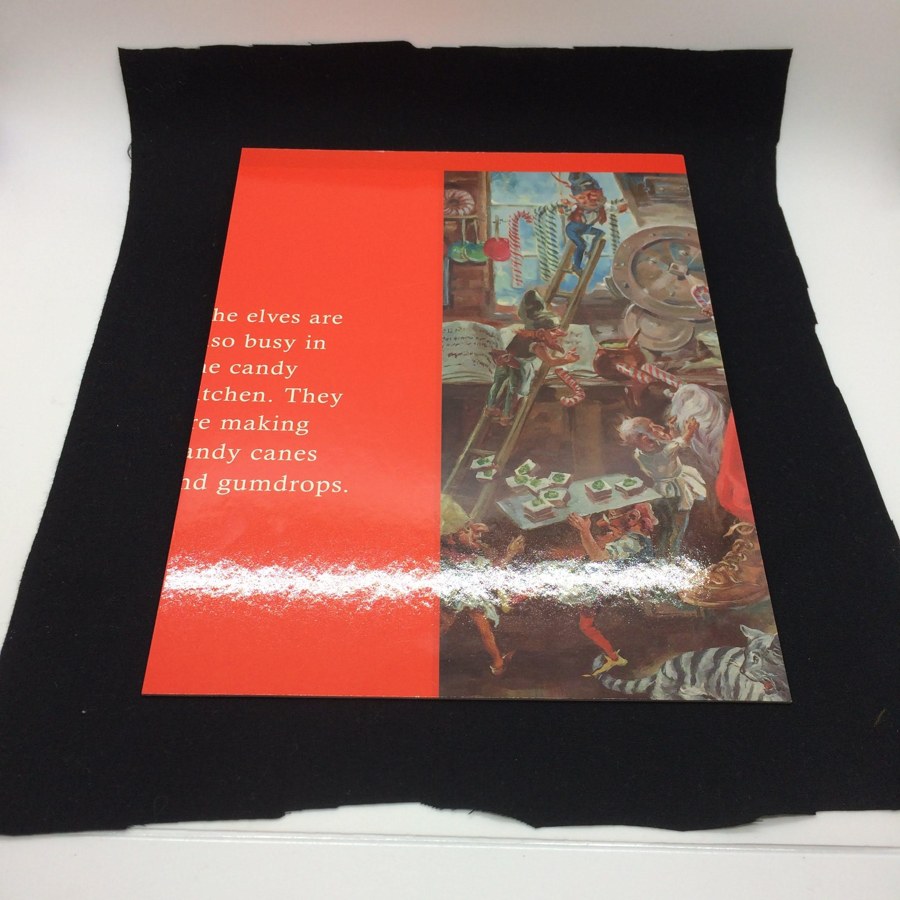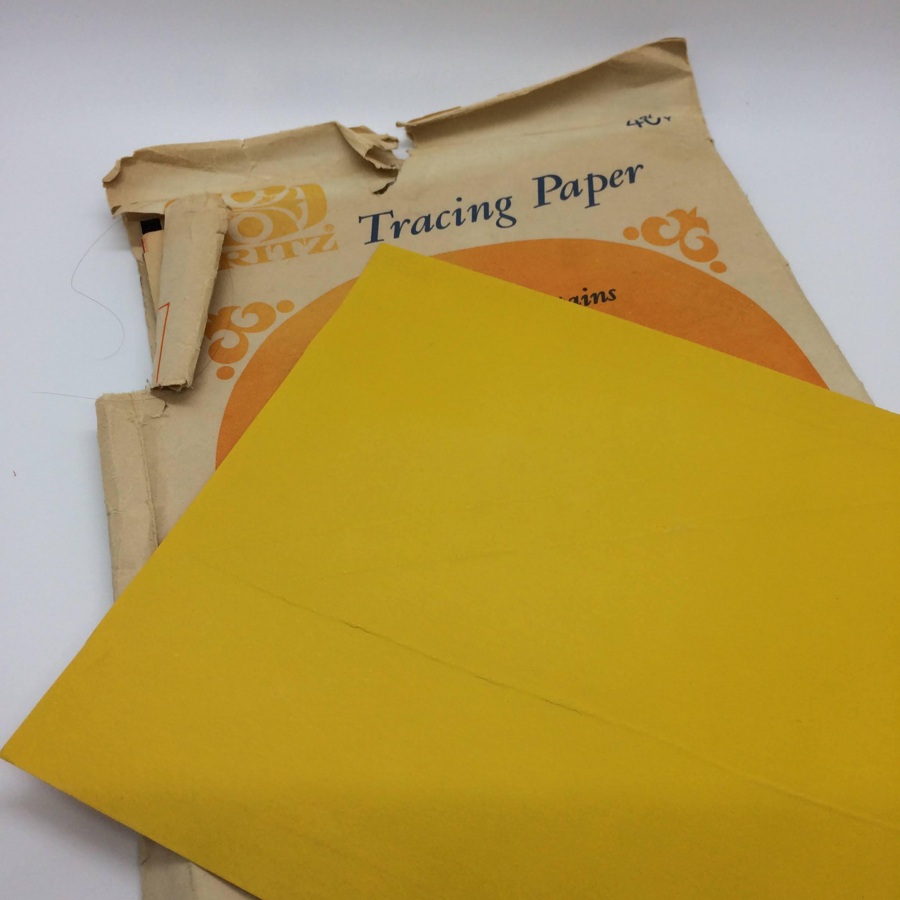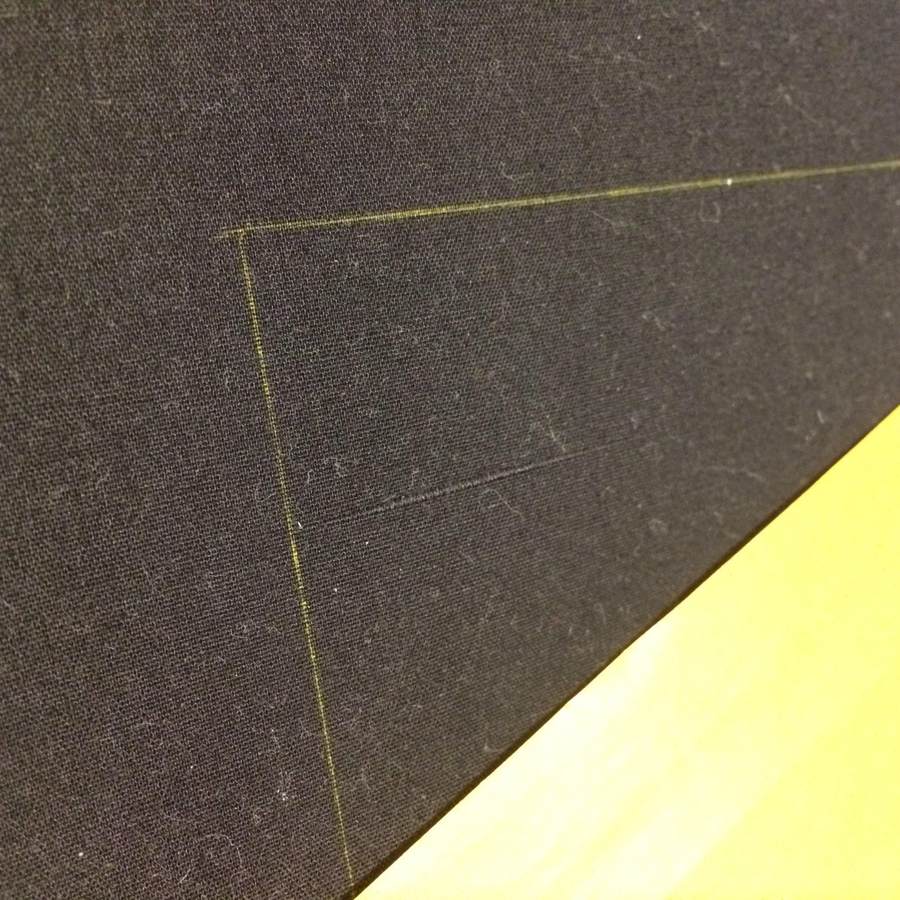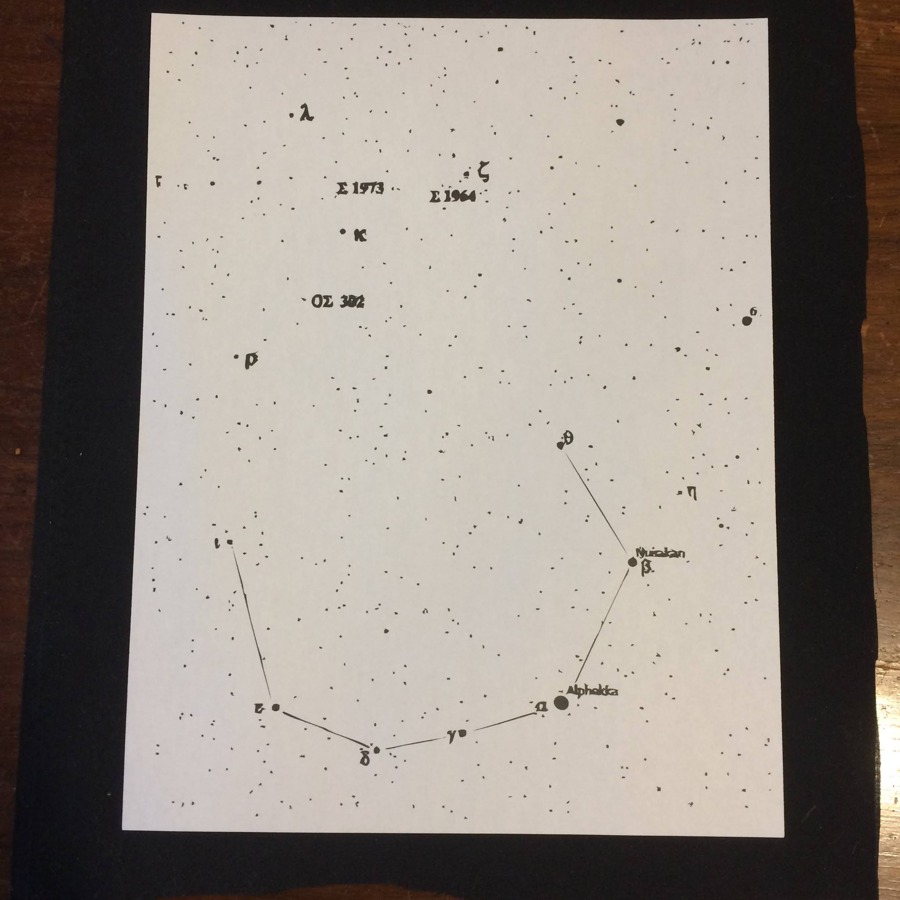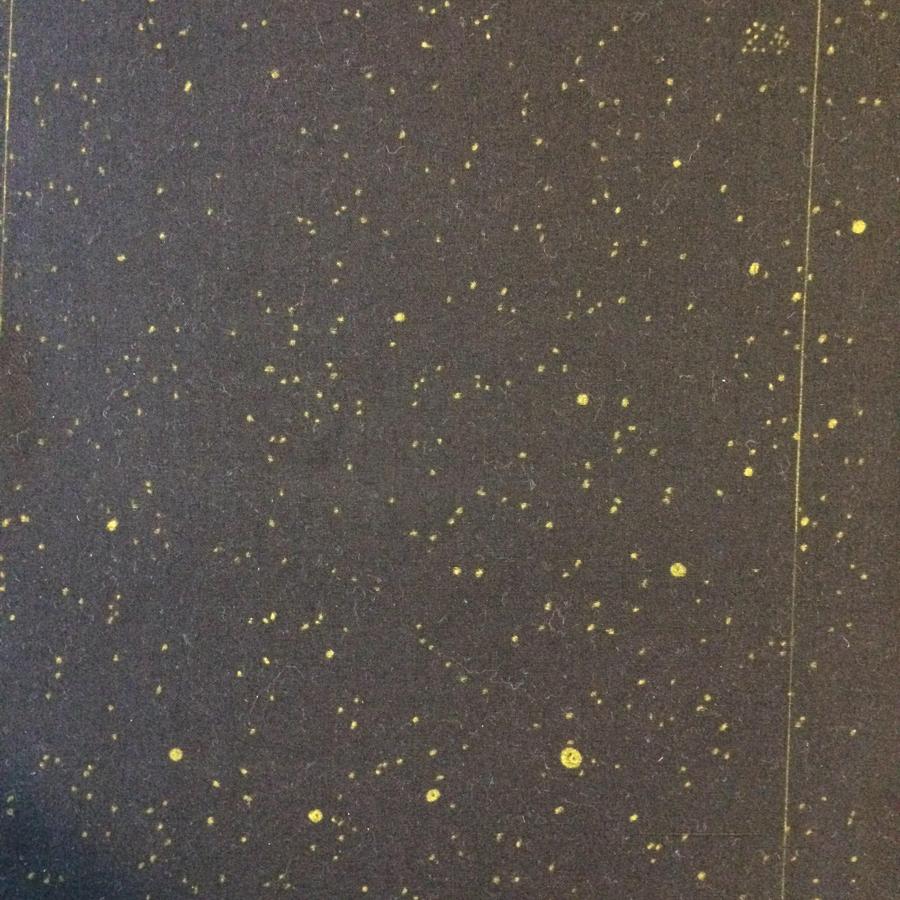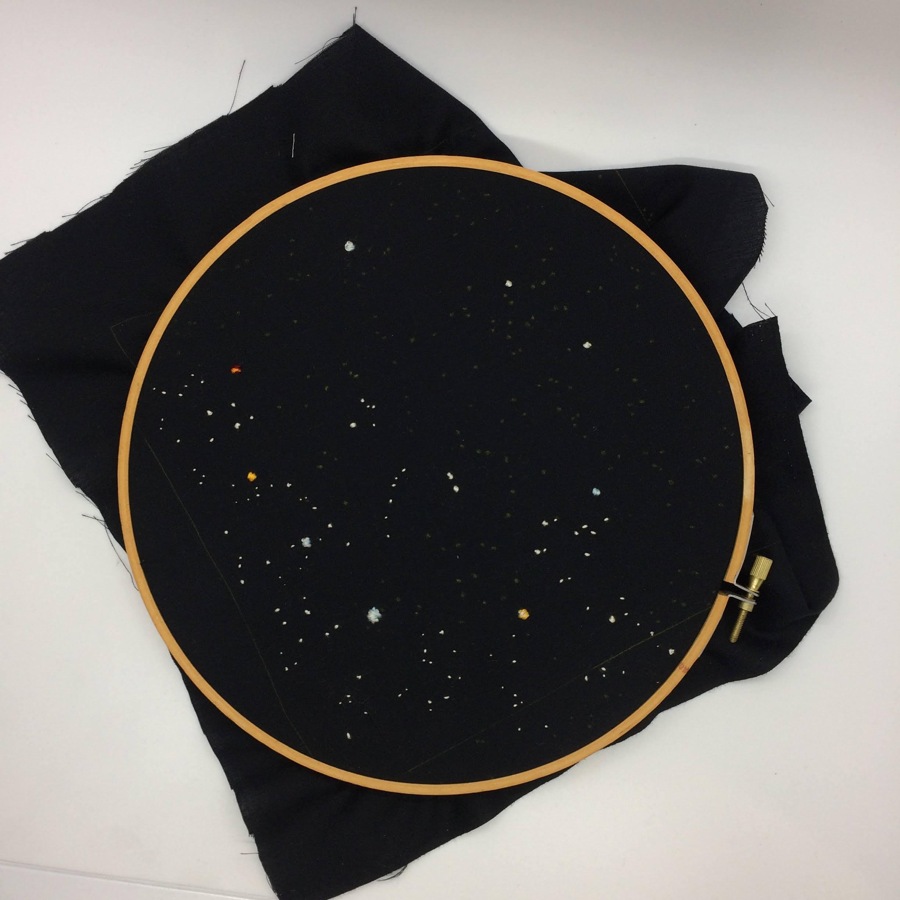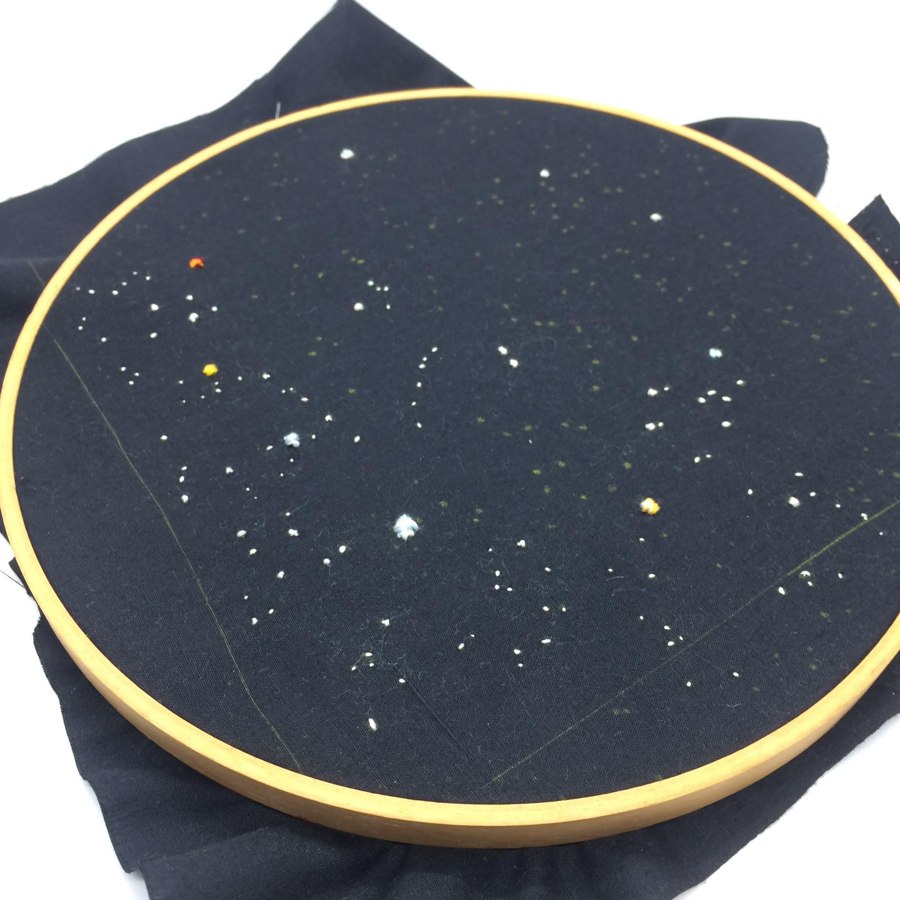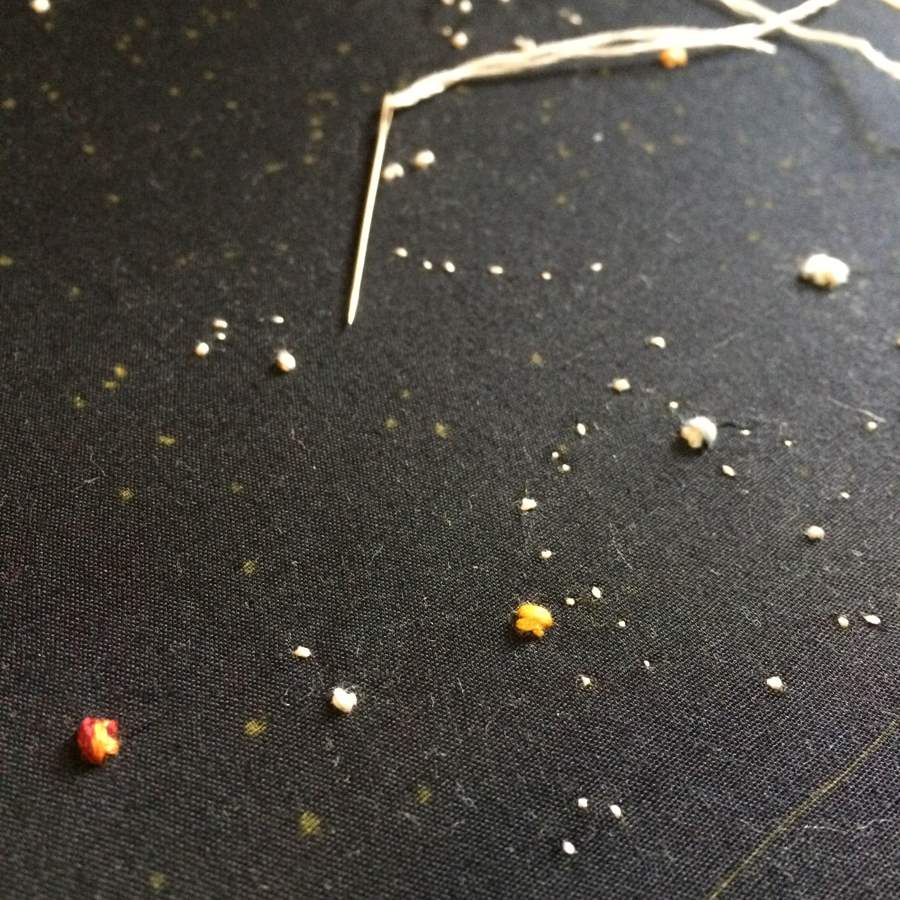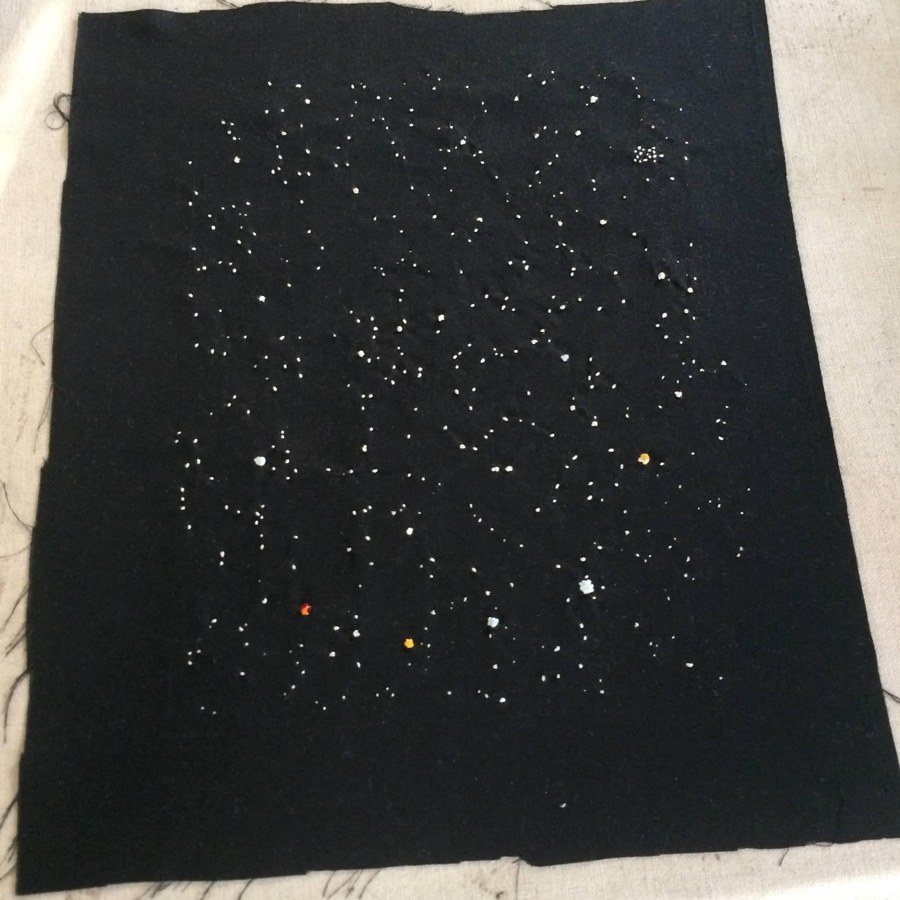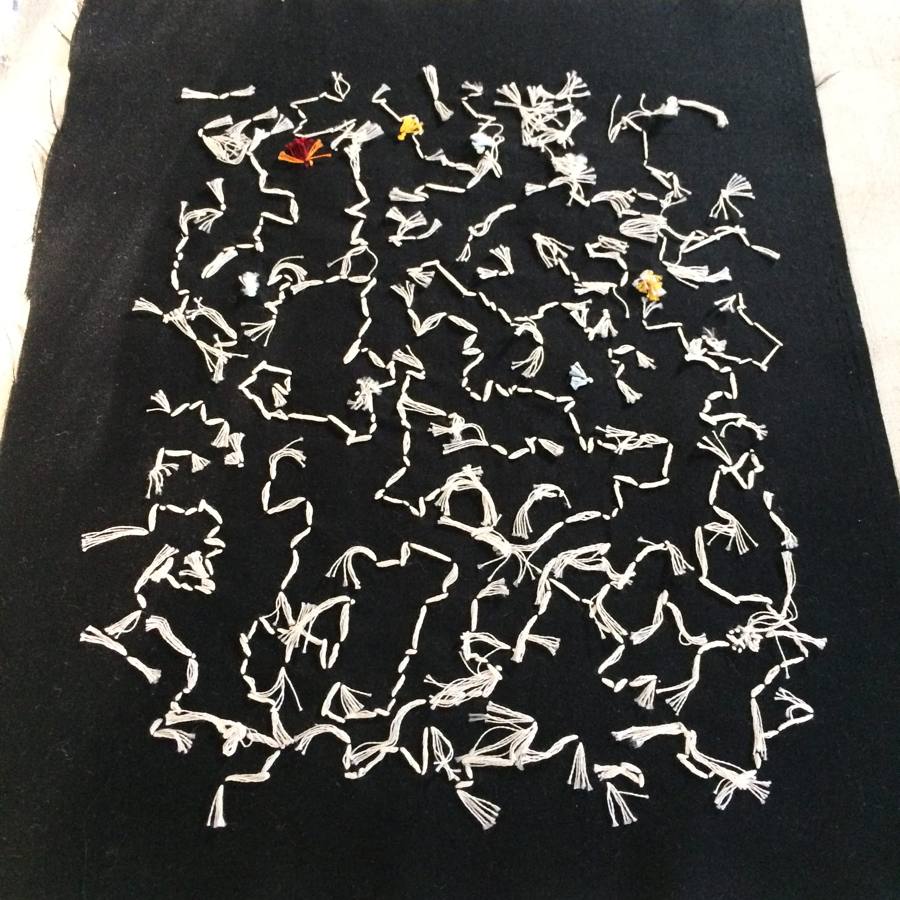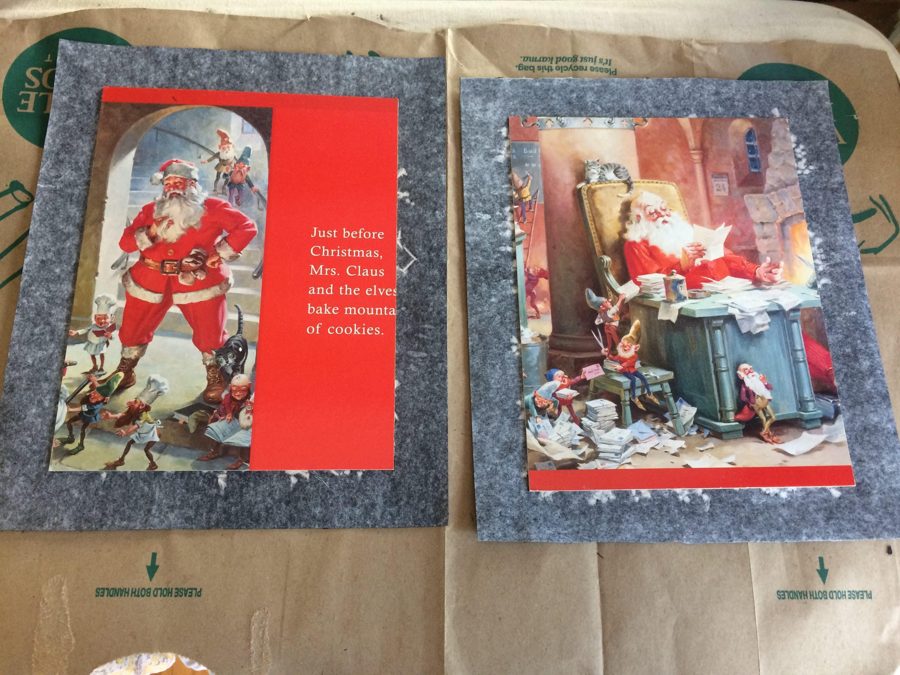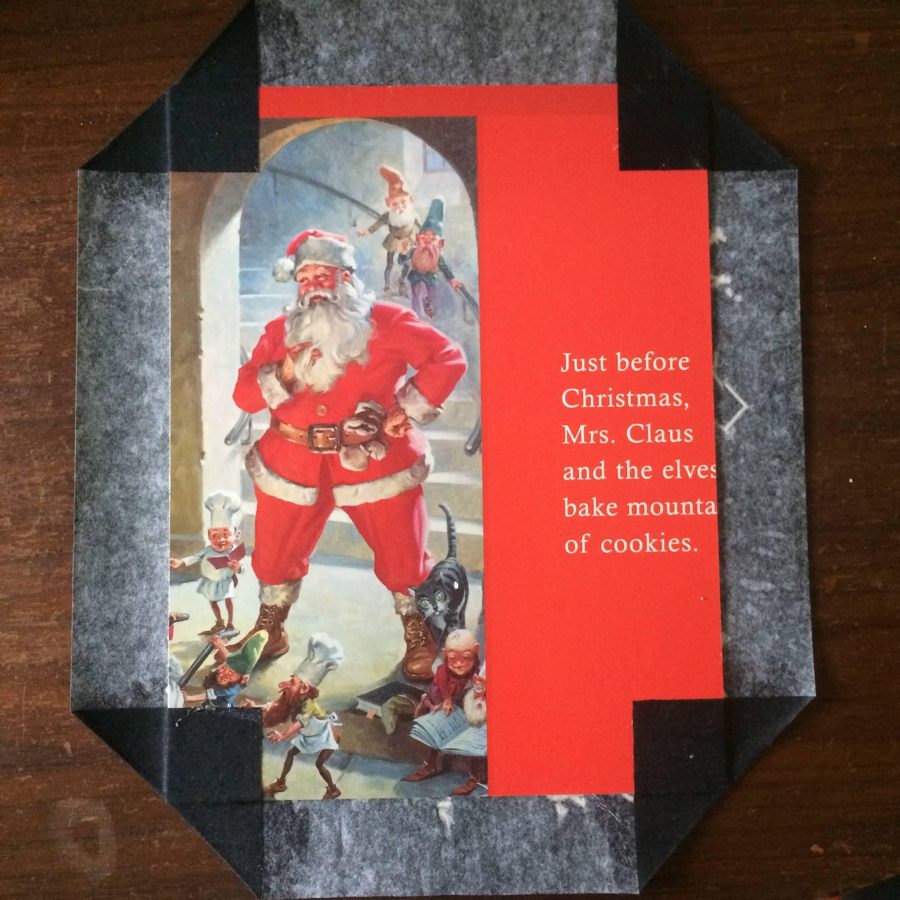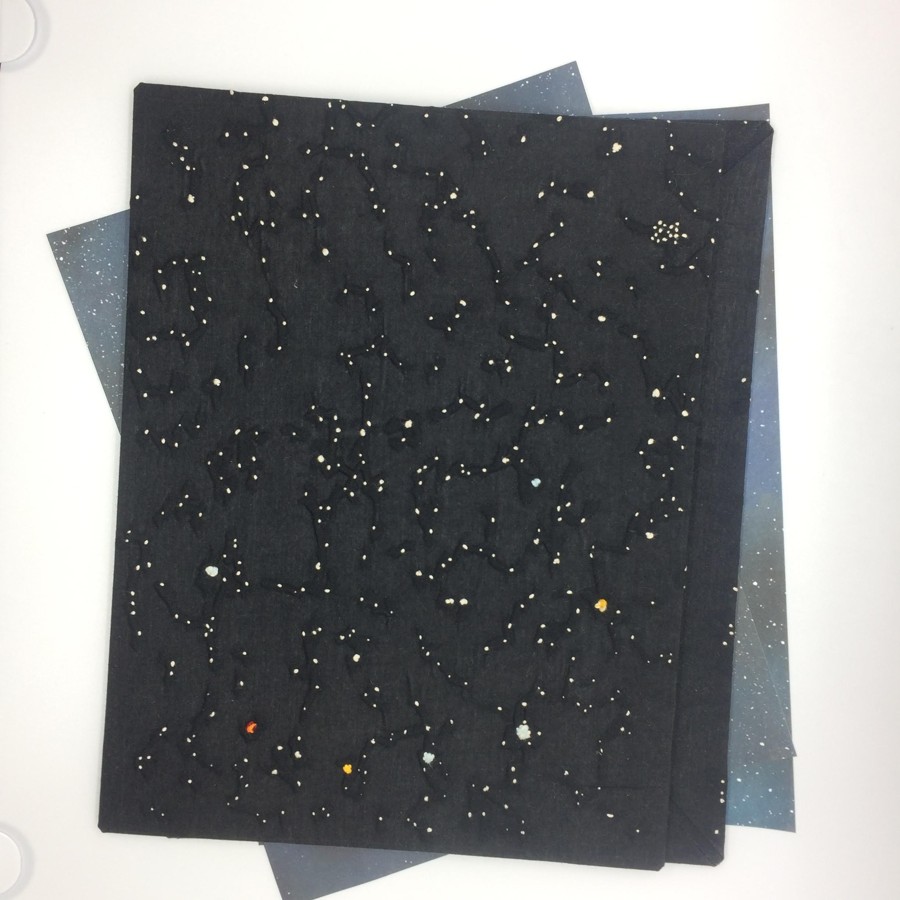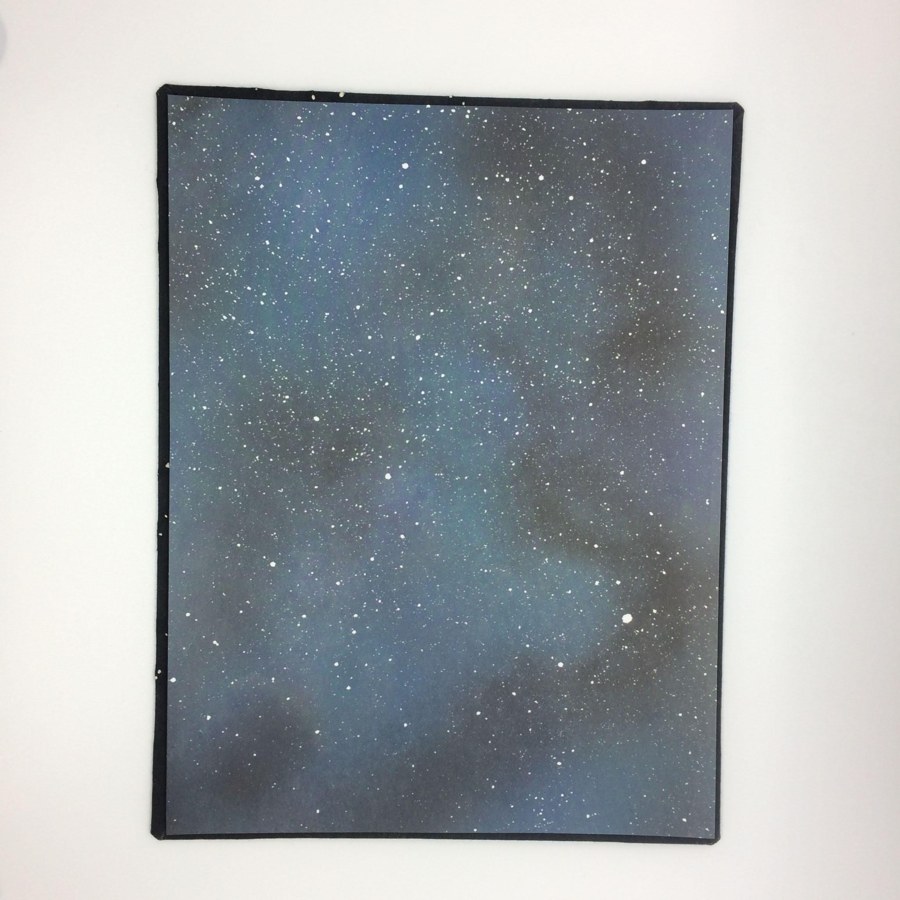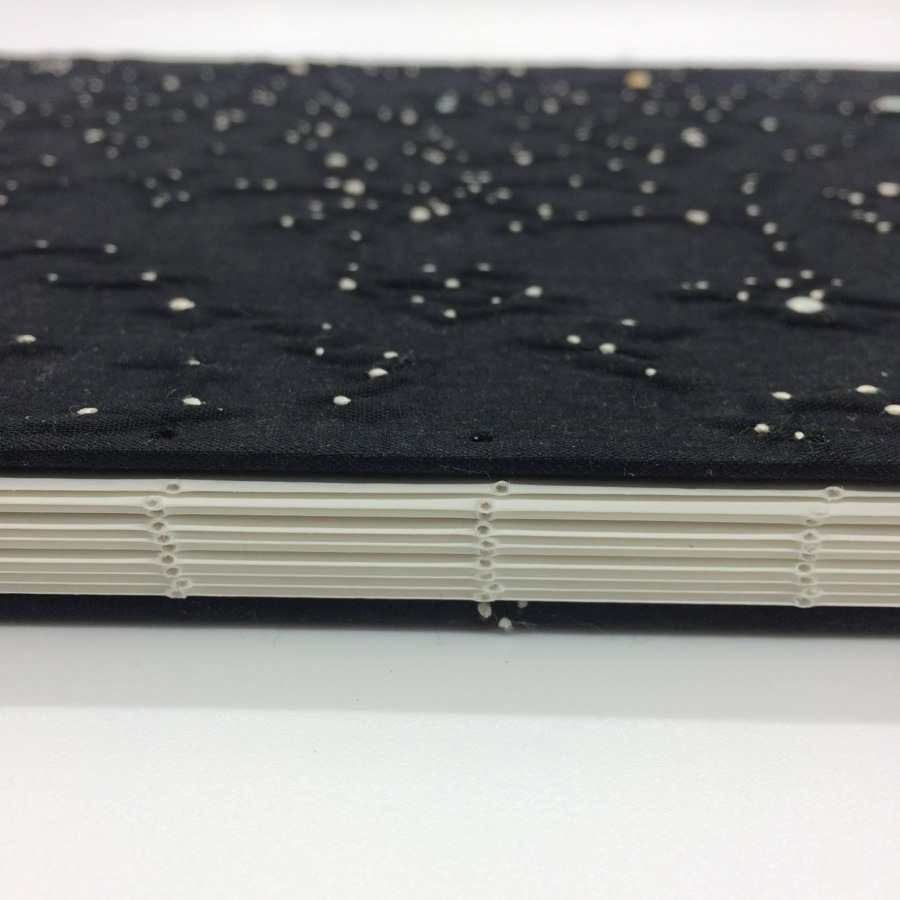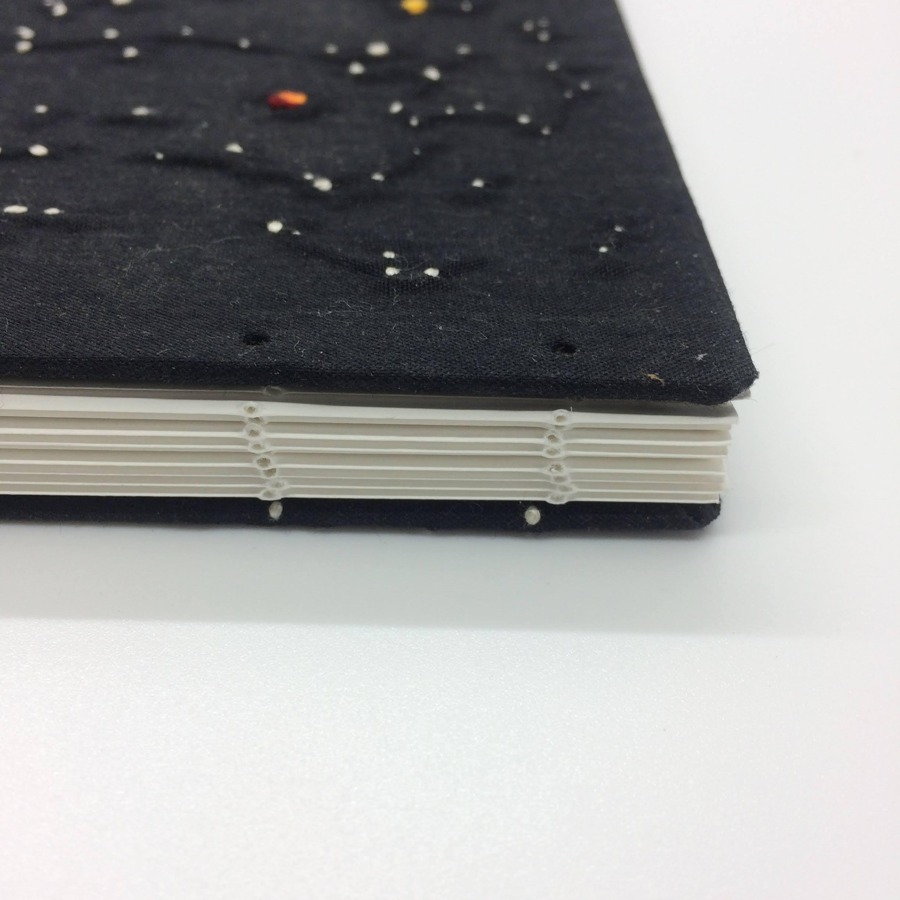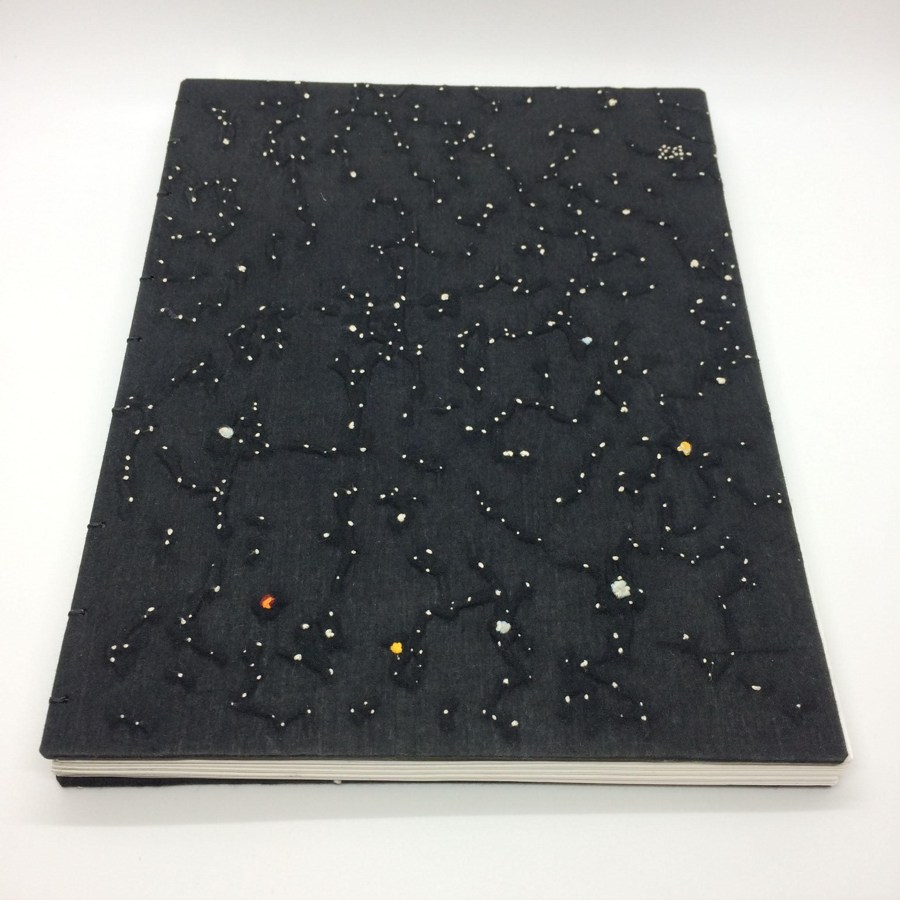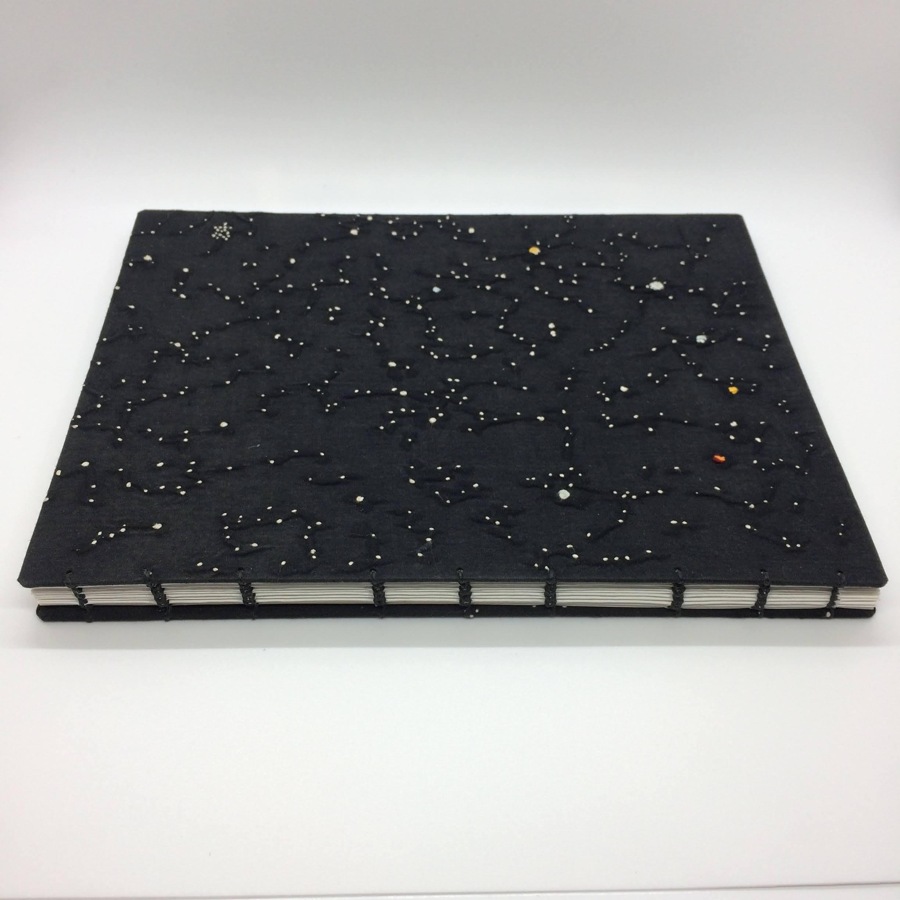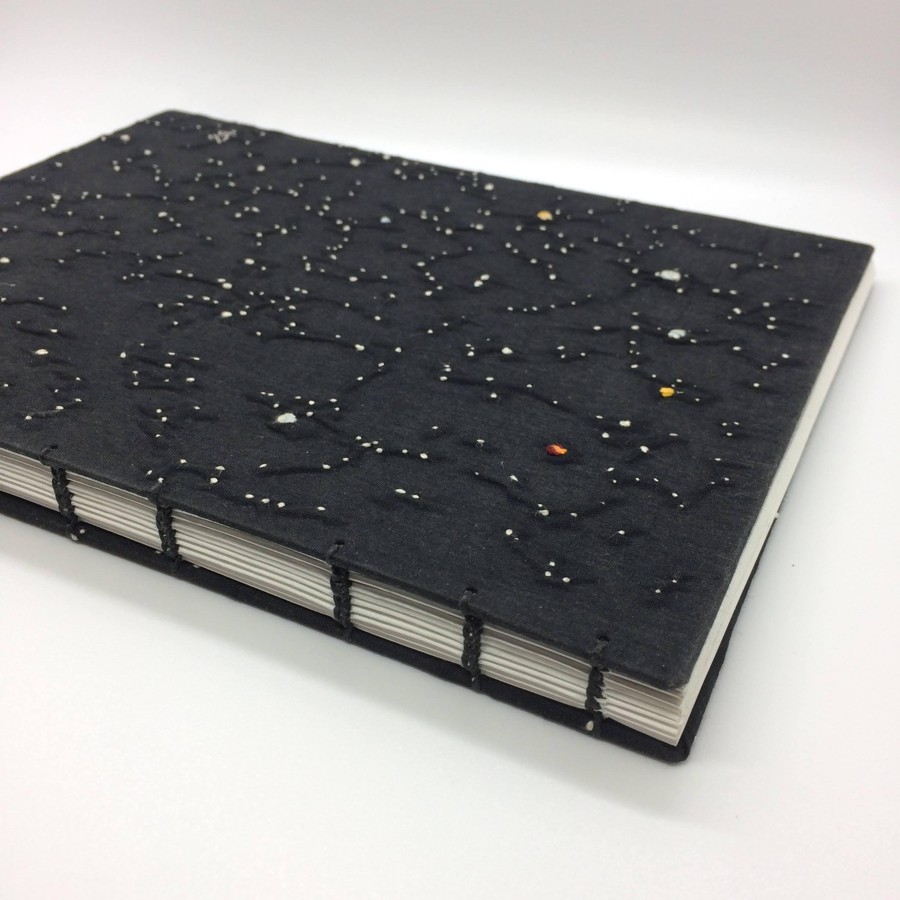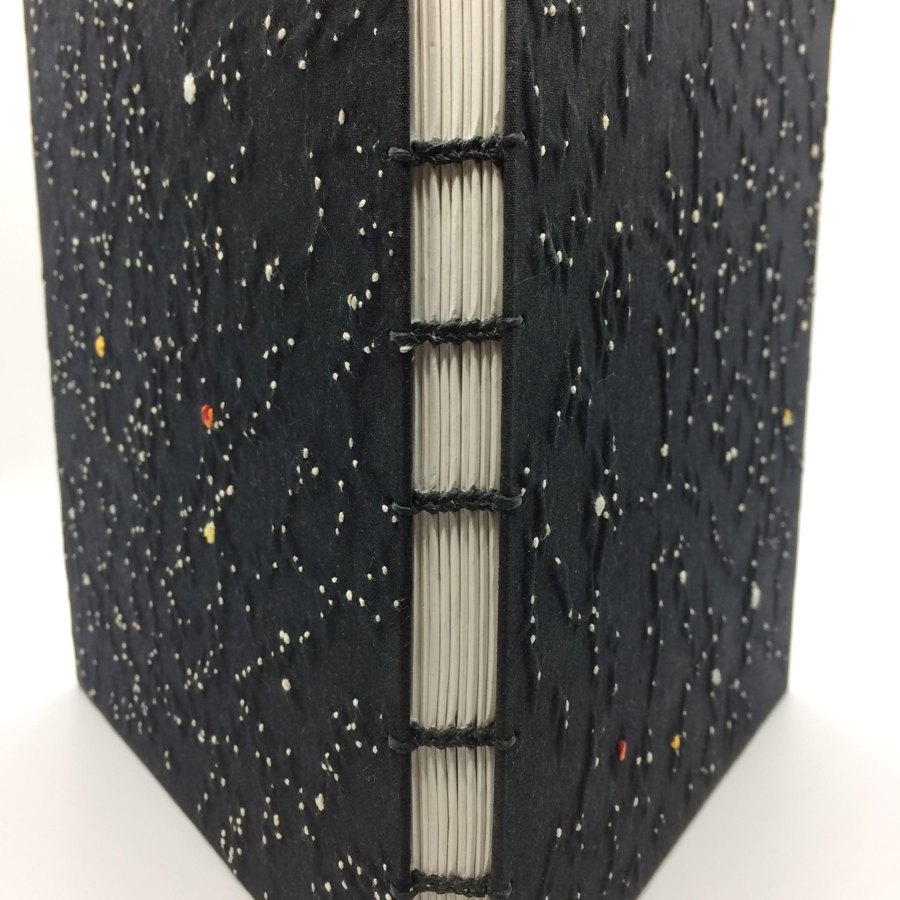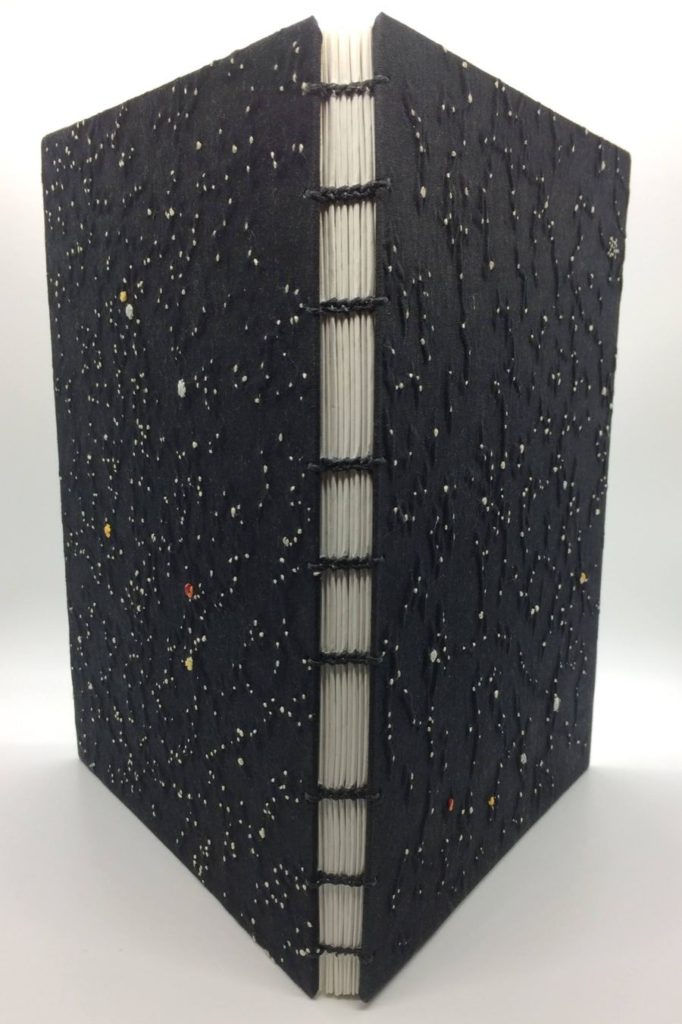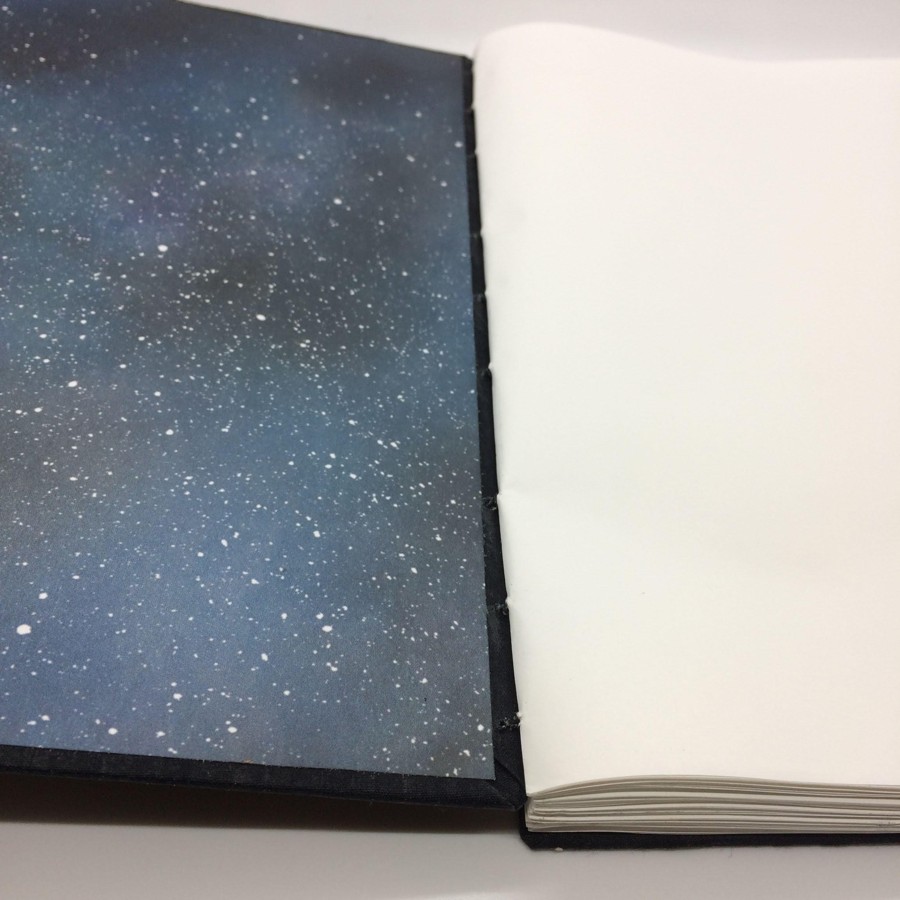This is the 24th journal in my current series of composition notebook sized journals. I chose Corona Borealis as the title/cover as a reference to the current pandemic and my favorite coffeeshop which I really miss being able to sit down in for my journal practice. Plus, I love anything astronomy related.
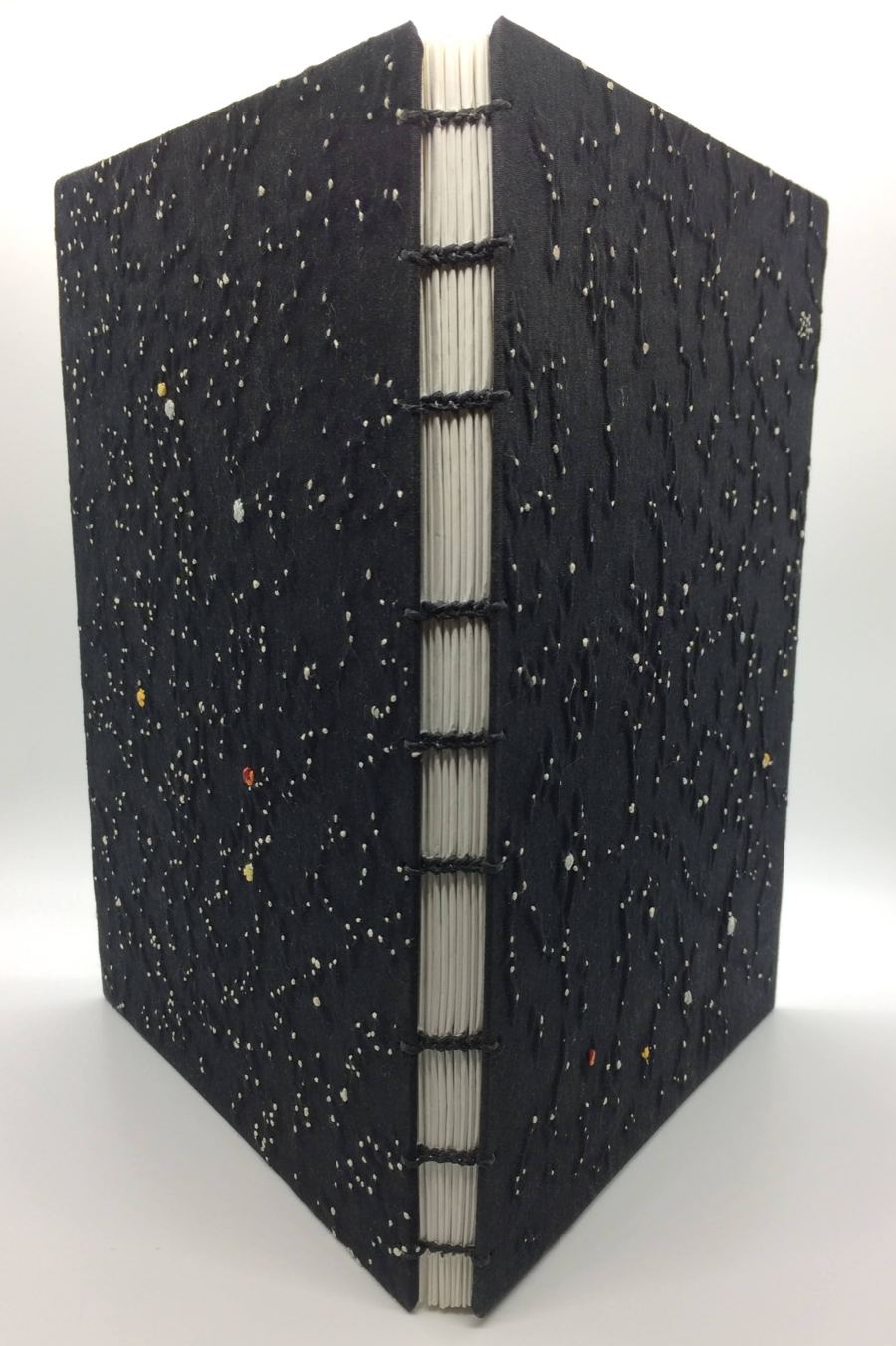
The design and my notes. I’m using the constellation Corona Borealis for the front cover. Rear cover will be the constellation Corvus. I chose Corona Borealis because of the current pandemic and the name of my favorite coffeeshop, Borealis Coffee Company. One day soon I hope to go back there to actually sit down to journal.
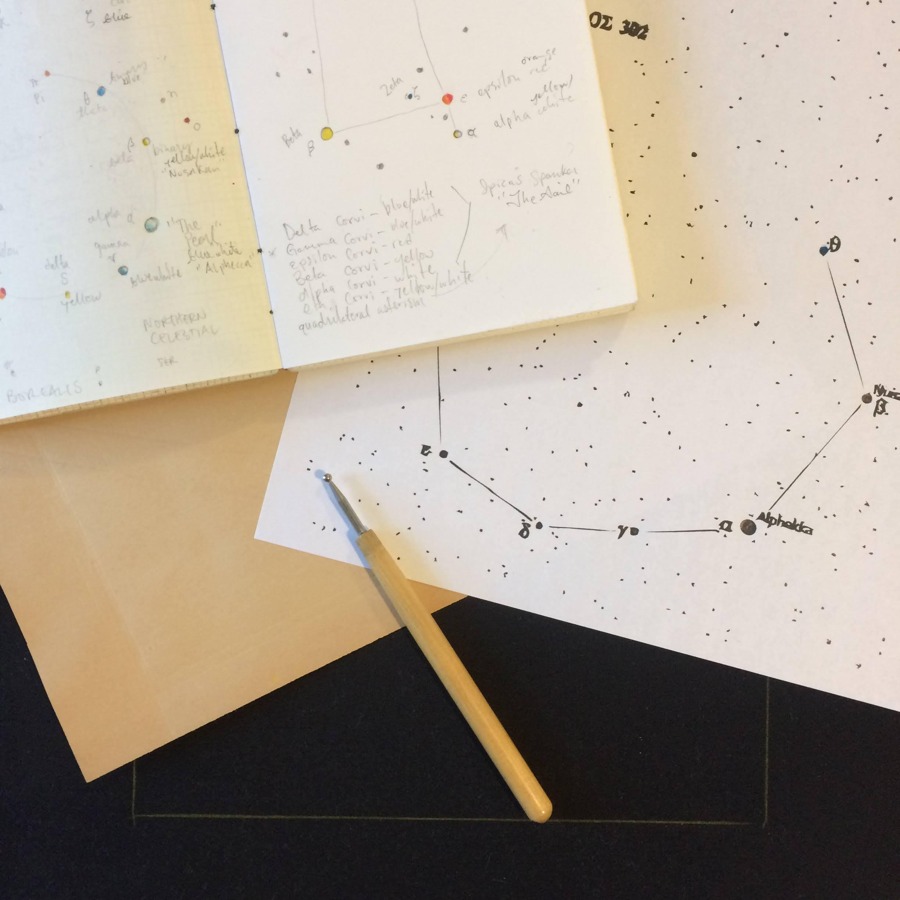
Cover board made from a Christmas picture book. Cloth cut to size larger than the board. Carbon paper that I’ll use to transfer the design.
First, marking out where my design should go and then lacing the design. The carbon paper goes underneath and using an embossing tool I draw over each of the stars I want to use. I used most of them.
The next step is to embroider the desing. I’m not using any fancy stitches at all. Most stitches are single stitches. Larger stars are several stitches overlapping. The only colored stars are of the main constellation. I tried to use “accurate” coloring for these stars.
Front and messy backside….
That mess concerned me so I decide to test the Heat’n’Bond on a scrap to see how it worked. Air bubbles… grr. This is caused by the excess thread on the backside. I’m not going to be able to avoid this unfortunately but I’ll try minimizing it by removing as much excess as possible. Sorry for the potato quality pic.
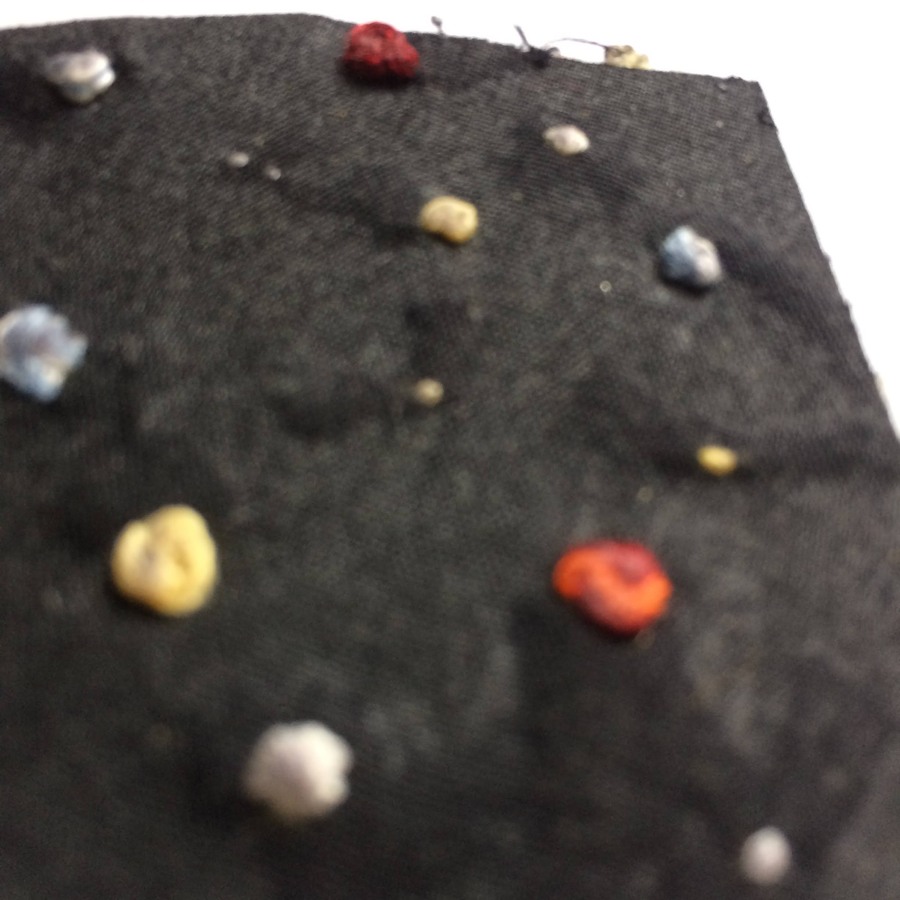
Excess removed. Hoping this works!
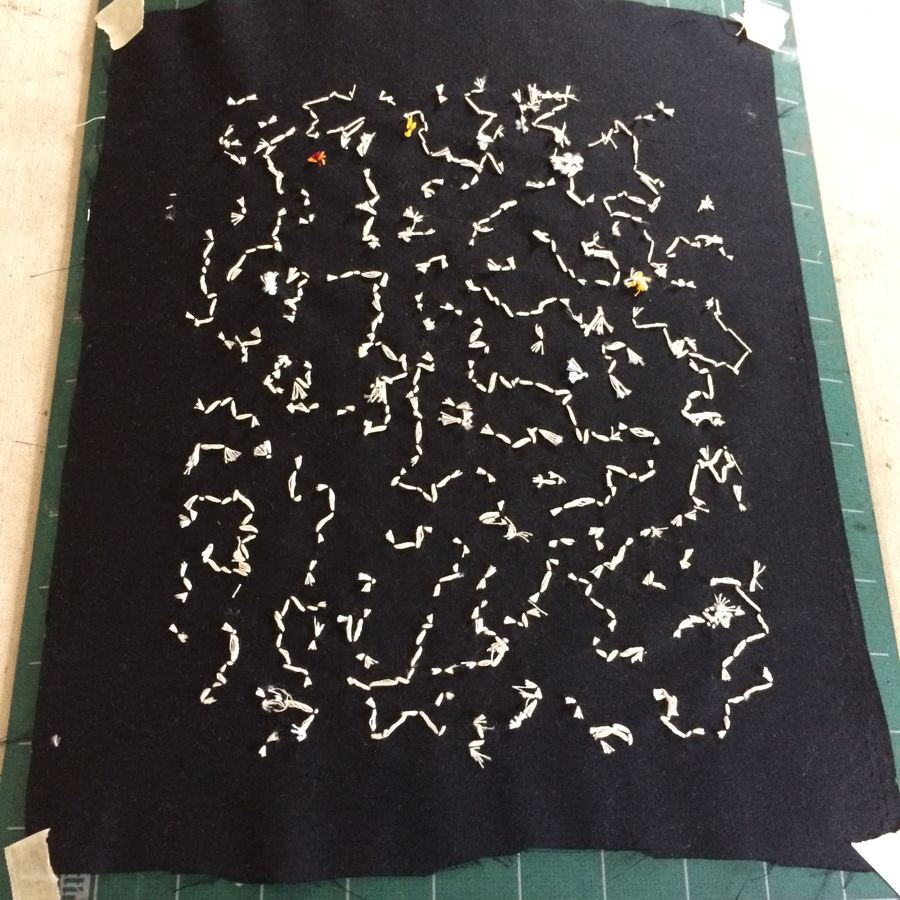
Heat’n’Bond cut to size. I got this method from Sea Lemon. It’s the quick and easy way to make bookcloth. You iron the Heat’n’Bbond face down and once it has adhered you can peel off the backing. At this point you lay a sheet of tissue paper over it and iron again. This creates a thin barrier to prevent the glue used to attached this to the cover board from seeping through the embroidered material.
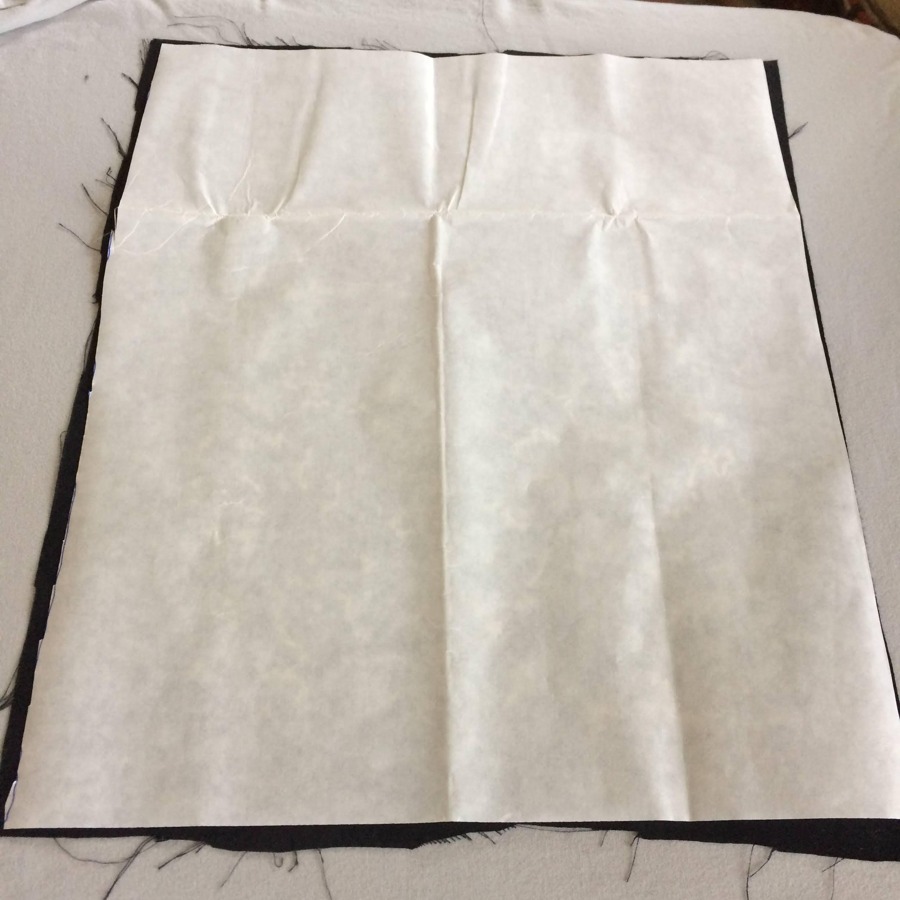
And done!
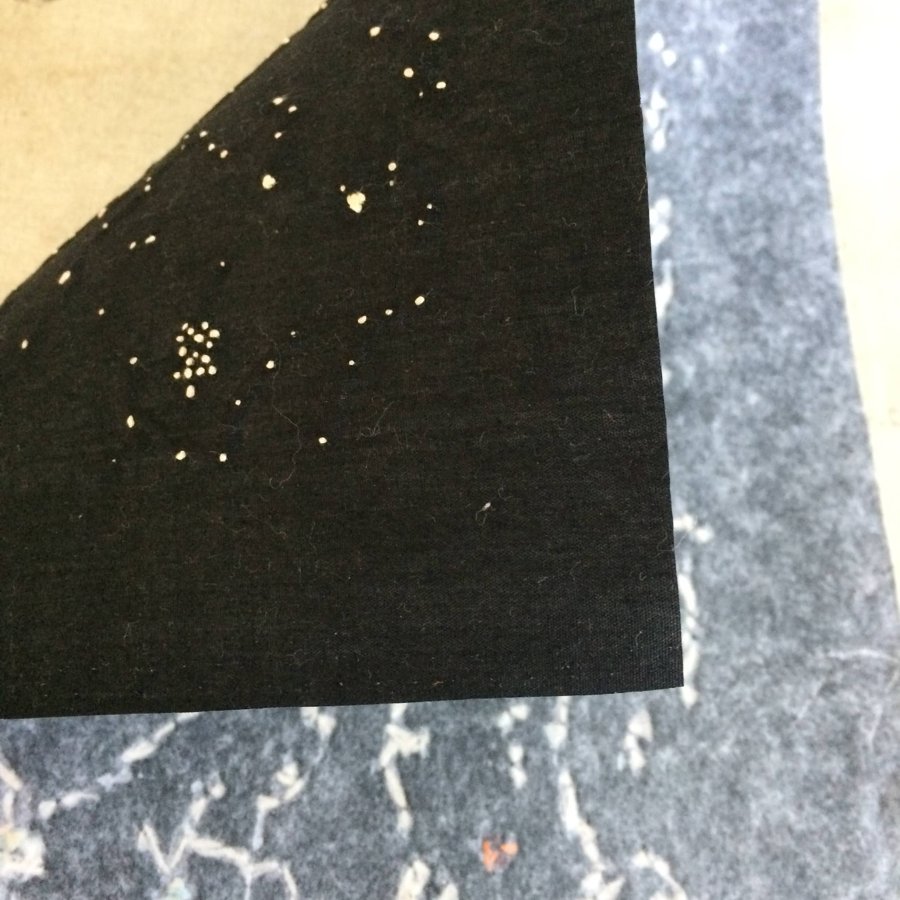
Heat’n’Bond and tissue added to both cover cloth. Book boards made from repurposed Christmas picturebook. I got a huge stack of these a few years back to use for my books. Mat board is not easy to find cheap so this is a great alternative. Using a bone folder I first fold down and crease the corners. I then used rubber cement to glue. Rubber cement is quick and easy to clean up. Not sure how archival it is but some of my oldest journals are fine 20 years on.
Boards are covered. Behind are scrapbook papers I picked up from Michael’s to go with the theme. Lighting in this photo really makes the air pockets stand out. I wish there were a way to fix this. 😐
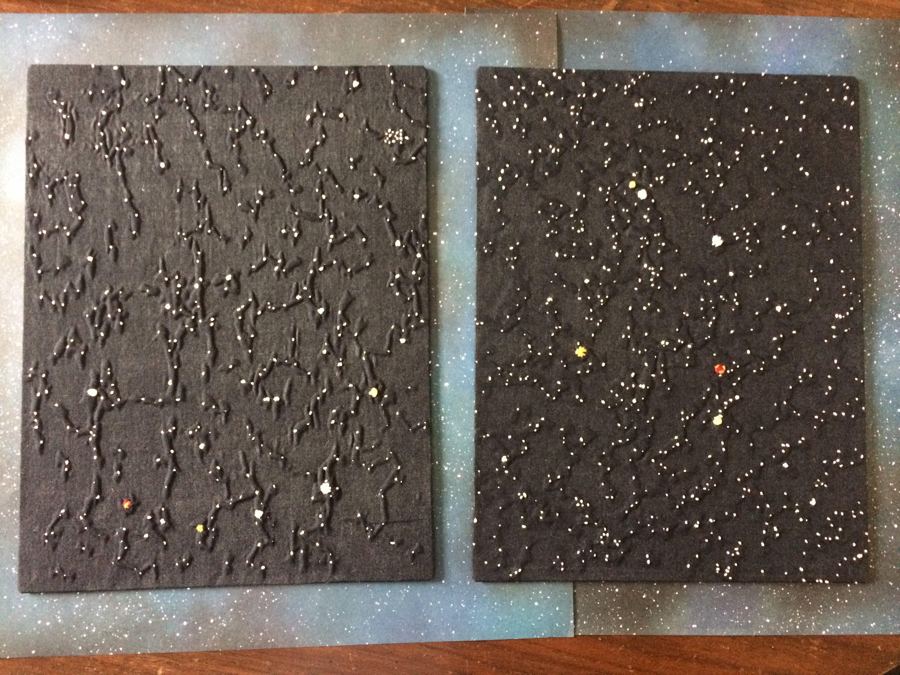
I’ll glue these on after I punch the holes for binding. I normally would punch through this too but this is my first bookcloth book and I’m not sure how well the cloth will hold up to punching. I want to have some room just in case I need to make any adjustments.
Text block cut and folded into signatures. Ready for punching.
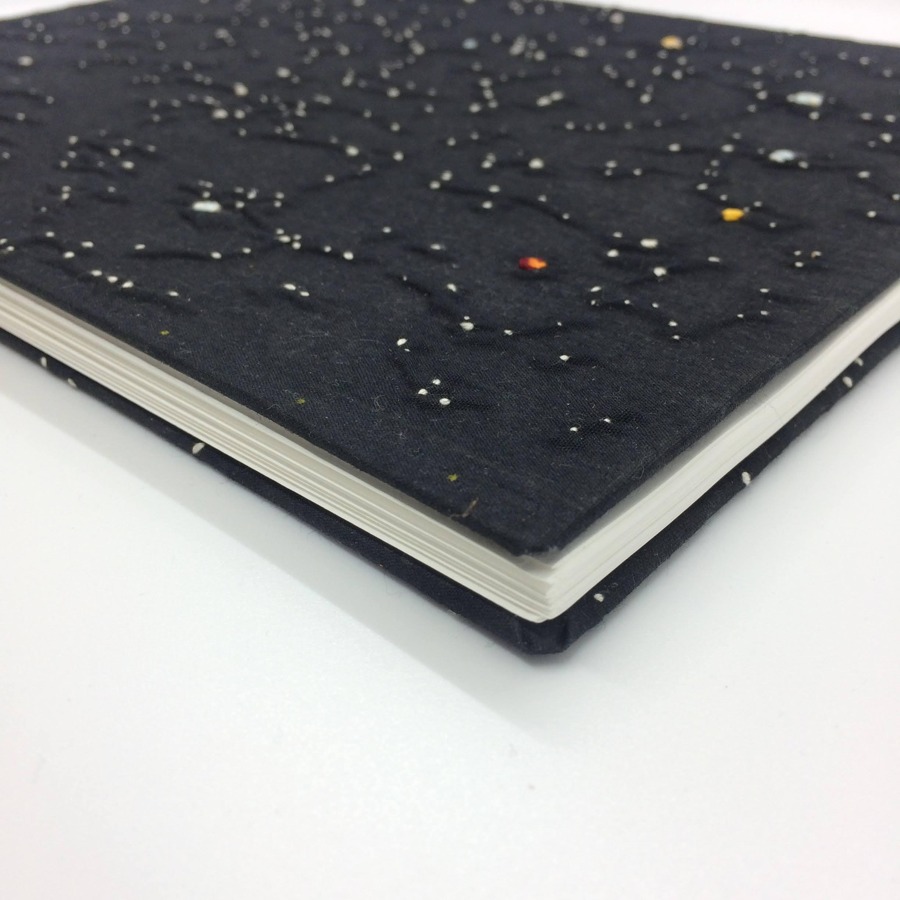
All punched! Next up… sew the signatures. I will use black linen thread. I’m not going to document the sewing process but you can use this excellent Sea Lemon tutorial here.
And it’s done! The Tomoe River paper was a real challenge to sew at this larger size. The punched holes tore a lot. :/ At one point (actually twice!) I completely missed a stitch which required me to undo half of the work. To hide the tears I had to reshuffle the signatures a bit. In the end, it looks great.
This is my 24th journal in this series so it needed a little star cluster for it.
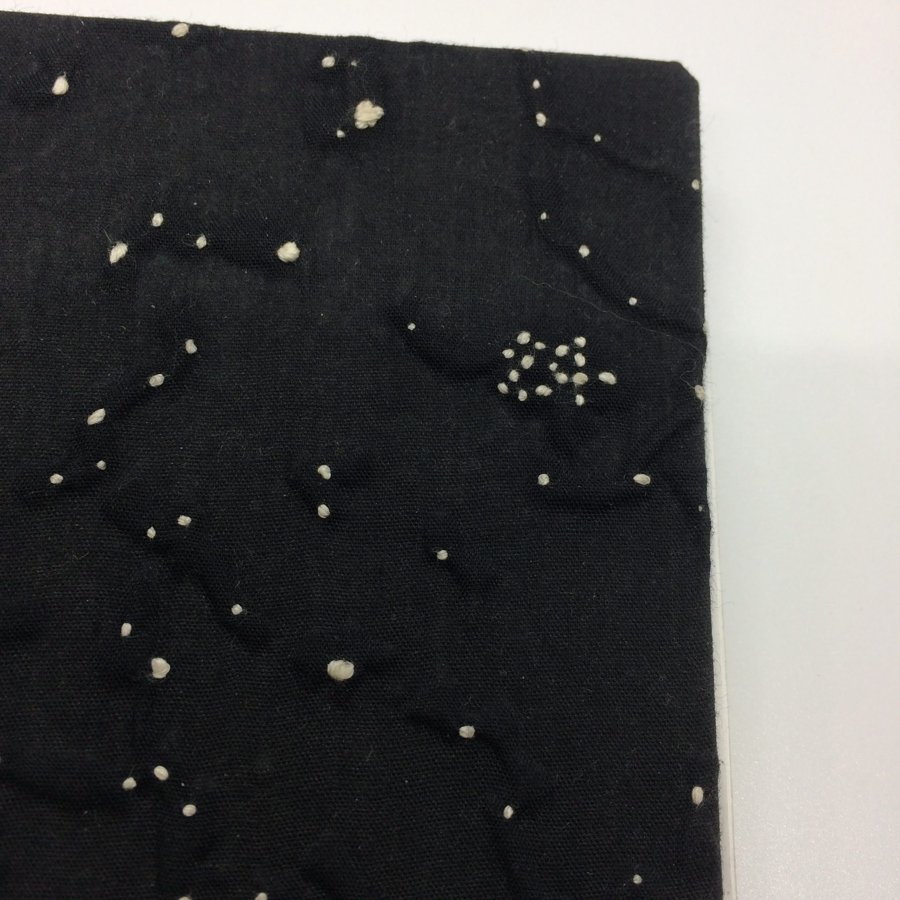
My thoughts on the build:
I’m not sure I will ever use Tomoe River for another handmade book or at least not for my personal journal in the composition notebook size. The paper is a dream to write on with fountain pens but it is extremely difficult to bind without tearing or creasing the paper. I think it would be perfect if the paper were just a tiny bit thicker. The Heat’n’bond method works great for bookcloth but I do not like the air bubbles caused by the embroidery. I may have to go the old school route with wheat paste and a press.
Further note:
I’ve been using this journal now since September 2020. The paper is great to write on with my fountain pens. Wetter inks will have heavier ghosting but I haven’t noticed any bleedthrough or feathering. I have even used some homemade inks and they work quite well. Collaging on the paper works well but I have not tried heavier ephemera/constructions.

